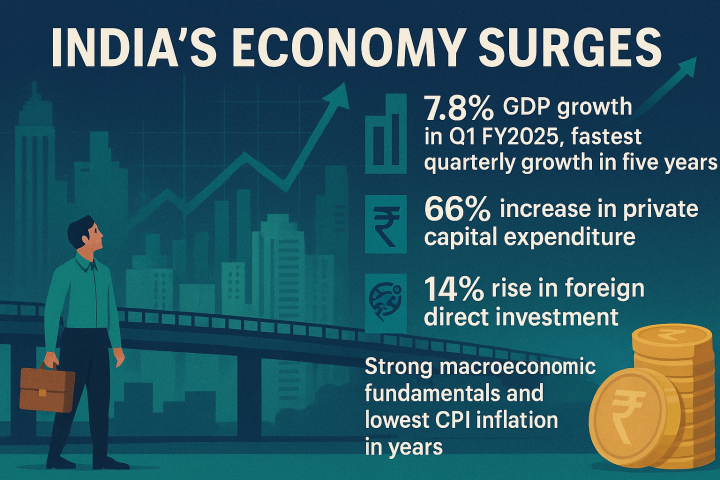Blog

Mumbai: India’s manufacturing sector has reached a significant milestone, with the Purchasing Managers’ Index (PMI) hitting a 17.5-year high. This development, highlighted by Commerce and Industry Minister Piyush Goyal at the 21st Annual Global Investor Conference, reflects a broader economic resurgence underpinned by robust infrastructure investment and policy reforms.
The PMI, a key indicator of industrial activity, suggests strong expansion in manufacturing output, new orders and employment. While the precise PMI figure was not disclosed, its historical peak underscores renewed confidence among producers and investors. This momentum coincides with India’s first-quarter gross domestic product (GDP) growth of 7.8% in the financial year (FY) 2025, the fastest quarterly growth in five years, and a 66% rise in private capital expenditure, signalling a broad-based recovery across sectors.
Infrastructure has played a pivotal role in this resurgence. Referred as a ‘force multiplier’, infrastructure investment has stimulated consumption and catalysed economic activity. The government’s emphasis on transport, logistics and digital connectivity has improved supply chain efficiency and market access, particularly for small and medium enterprises (SMEs). These improvements have helped manufacturers scale operations and respond more effectively to domestic and global demand.
The Make in India initiative, now entering a more mature phase, continues to attract investment in high-value sectors such as semiconductors, drones and electrical steel. The government’s push for domestic sourcing and resilient supply chains, without disengaging from global trade, reflects a pragmatic approach to industrial policy. This is further supported by ongoing trade negotiations with key partners including the European Union (EU), EFTA bloc and the United States, aimed at expanding market access and diversifying export destinations.
Macroeconomic indicators reinforce the narrative of stability. Consumer price inflation is at its lowest in years, and foreign direct investment has risen by 14%. The banking sector has shown strong performance, contributing to financial stability and credit availability. India’s sovereign rating upgrade from BBB– to BBB with a stable outlook reflects international recognition of its economic fundamentals.
Policy reforms have also contributed to the improved business climate. The government’s efforts to deregulate, simplify procedures and decriminalise business laws have reduced compliance burdens. Anticipated GST 2.0 reforms are expected to further streamline taxation and enhance consumer sentiment. Tax rate reductions and accommodative monetary policy, including lower repo and cash reserve rates, have supported investment and spending without compromising inflation control.
While these developments are encouraging, sustaining manufacturing growth will require continued investment in infrastructure and industrial capacity. The government’s call for industry participation in shaping Viksit Bharat 2047 – a long-term vision for a developed India – underscores the need for collaborative effort. The emphasis on quality manufacturing, energy efficiency and ethical business practices reflects a broader commitment to sustainable and inclusive growth.
India’s ability to convert adversity into opportunity has been tested and proven in past crises, from the 1991 reforms to the post-pandemic recovery. The current manufacturing upswing, supported by infrastructure and policy alignment, suggests that the country is once again poised to leverage its strengths for long-term economic transformation.
(Write to us at editorial@bombaychamber.com)








